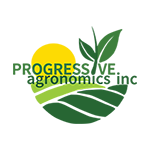After enduring the spring of 2019, it will not take must convincing for many of you that precipitation extremes have become the new normal. It’s been said that if you want things to be different, just wait until next year. While this will likely be true, the trend of punishing rain events occurring more frequently in undeniable.
Impacts of extreme precipitation:
- Intense rains with increased atmospheric moisture = persistent risk of flooding
- Soil movement and topsoil degradation
- Decreased aggregate stability, lower soil O2 levels
- Sustained dry periods between rains
- Days to perform field work are limited
Effective Water Utilization
While excessive water at any given time has many downsides, effective water utilization is critical to overall crop development and growth. Water is a fundamental component of photosynthesis. In order to maximize this critical resource we must implement management strategies that allow our soils to both accept and retain more water to sustain us throughout the drier periods.
How to get soils to both accept and hold more water?
- Increase soil calcium levels. Calcium is a large nutrient molecule that builds aggregate stability and increases pore space. The higher the soil calcium level, the lower the likelihood for crusting as well as seedling diseases. Also, with improved pore space comes increased microbial activity as a result of increase O2 levels thus enhanced nutrient release.
Its often assumed that is soil pH is in balance, the soil calcium levels are, too. This is not always the case. Lime sources contain varying levels of calcium and magnesium. Both elements will increase pH; however, higher levels of calcium promote aggregate stability while higher levels of magnesium does just the opposite. If pH needs to be amended, use lime with the highest calcium and lowest magnesium content available. If pH is adequate, gypsum (calcium sulfate), is a means to increase soil calcium levels while not affecting soil pH.
- Cover crops, or increased months of the year with an actively growing crop, such as wheat. An actively growing root system increases water infilitration and soil carbon (food source for microbes) with the increase of mycorrhizae populations. Many farmers I speak with tell me their best crops are those typically followin wheat. Michigan State University conducted a study that reinforces the importance of wheat within a crop rotation and its overall impact on corn and soybean yields. When wheat was part of the rotation, corn yields improved by 23% overall and soybean yields increased by 16%.
- Reduced tillage. Ex: strip-till, no till, minimal till, strip freshener. I am not opposed to tillage; however, tillage releases lots of soil carbon. It is estimated that soils can only sequester approximately 10% of emitted carbon. Tillage also disrupts aggregate stability.
- Manure. Manure contributes to the overall soil organic carbon content. Nutrient release is gradual over time because manure contains both organic and inorganic nutrient forms; however, the crop immediately following a manure application receives the greatest nutrient benefit.
- Mycorrhizae. This beneficial fungi grows in a symbiotic relationship with plant roots. Mycorrhizae serve as extensions to the root system and enhance overall phosphorus (P) uptake as well as water availiability. These fungi also produce glomalin, a protein that contributes significantly to overall soil carbon levels. Many strains of mycorrhizae exist in several different products on the market today.
- Humic Solutions. These forms of carbon are a primary food source for microorganisms (especially fungi). Humics also help improve soil stability by way of microorganisms binding soil particles together. These carbon sources can also serve as nutrient stabilizers to complement a sound fertility program.
What Production Techniques Will You Adopt to Account For Changing Weather Patterns?
~Luke Schulte – Field Agronomist
